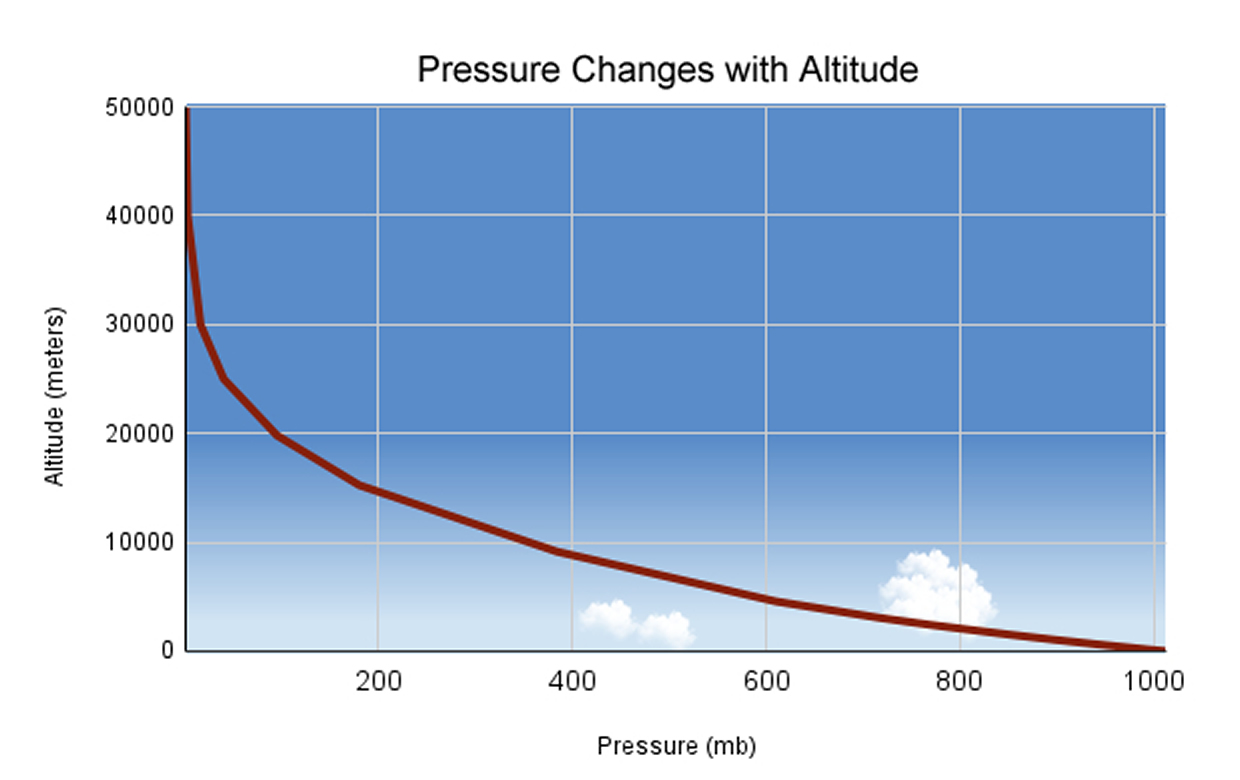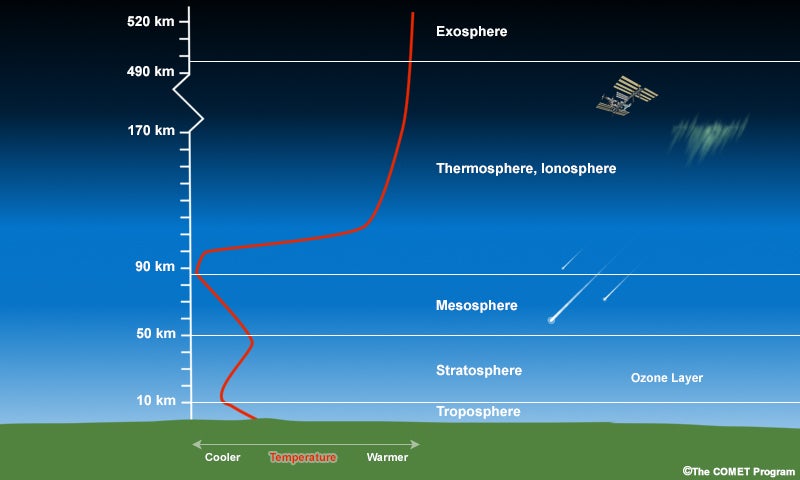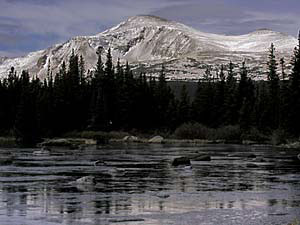Change in the Atmosphere with Altitude
Air pressure changes with altitude.
Air is all around us, but we cannot see it. Gravity from the Earth pulls air down - this is called air pressure. We don't feel this pressure because our bodies push an equal amount of pressure outward. This graph shows how air density and air pressure changes with altitude (the distance above sea level). Barometers are used to measure air pressure in milibars.
This graph shows how air pressure changes with altitude (the distance above sea level) as one moves upward in the atmosphere. The density of air is computed based on the mass of air molecules, divided by the volume of air. Density and pressure change similarly with height.

Which of the following statements about the graph are true?
Temperature changes with altitude
The atmosphere is divided into different layers depending on how temperature changes. Take a look at the graph below to see how temperature changes with altitude.

Which of the following statements about the graph are true?
Near the Earth's surface, air gets cooler the higher you climb.
As you climb a mountain, you can expect the air temperature to decrease by 6.5° C for every 1000 meters you gain. This is called the standard (average) lapse rate.

If air temperature is 27° C at sea level as shown, you can expect it to be around 1° C at air altitude of 4000 meters because of the lapse rate.
Plan an Expedition
You are going to climb Mount Audubon in Colorado today!
